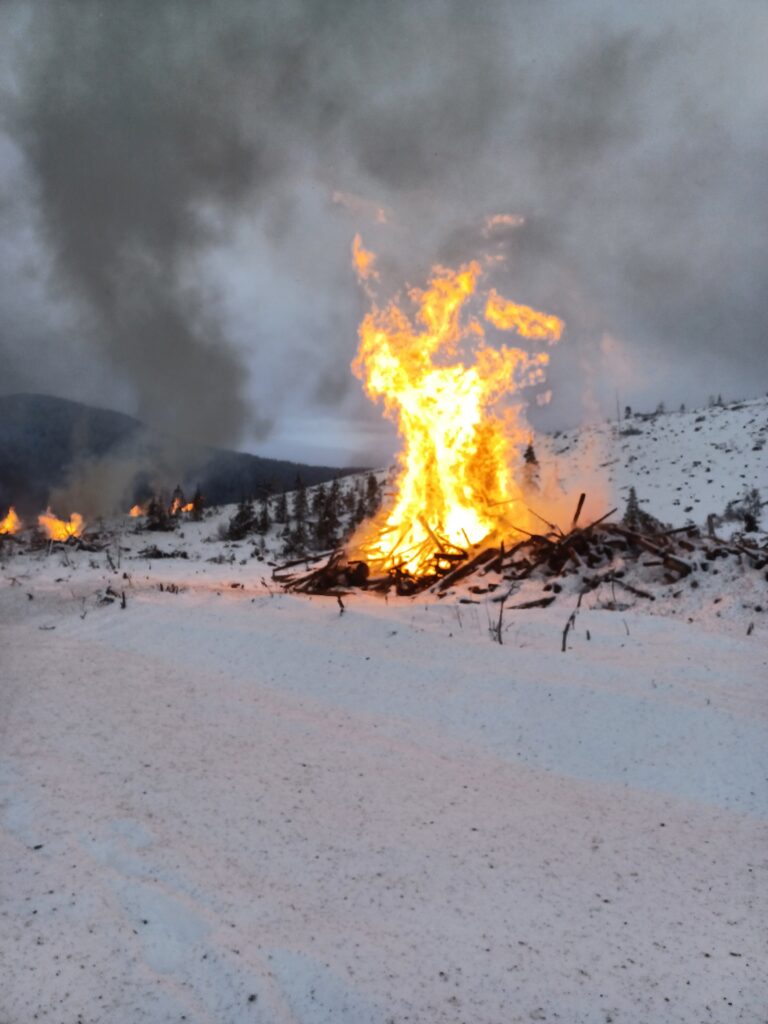Oh, it’s the fun time of year, when everyone gets out those drip torches and mixes up a secret sauce to go burning. So fun! And probably the highest risk activity you undertake on your woodlot.
Four things to remember to do before you light up, one of which applies regardless of whether you light up or not (paperwork).
- The Burning Registration Number
- The Fireguard
- The Smoke (Venting)
- The Paperwork
In that order, no exceptions. If you have logged, but can’t burn because waste assessments aren’t done or venting won’t let you burn, you still must fill out the Fuel Hazard Abatement Assessments.
Easiest on the list is the first step. Get yourself a Burning Reference Number. The reference number is only valid for two weeks, so remember to renew. Call 1-888-797-1717 or email hpr.1800@gov.bc.ca to get a Burning Reference Number. If you email, you need to receive a response with a Burning Registration Number before you officially have a number. Have your coordinates of where you are burning and approximate number of piles handy when you phone. Here is a link to the Industrial & Resource Management Burning Pamphlet. It’s got contact information for your Fire Centre if you need to ask questions and Burning Registration Number phone number.
You must make sure this number is available onsite during the duration of burning. You should have a copy in your truck while you burn.
The second step: The Fireguard. This is new-ish. It was effective on March 31, 2024. The new policy breaks burning into four Open Fire categories. We’re only going to discuss Category 3 Open Fires which are piles that meet one of the definitions below:
- Three or more piles each not exceeding 2 metres in height and 3 metres in width
- One or more piles each exceeding 2 metres in height or 3 metres in width
- One or more windrows, none of which exceed 200 metres in length or 15 metres in width
- Stubble or grass over an area exceeding 0.2 hectares
So, if you are burning piles under Category 3 Open fire, you need to ensure a fuel break is in place around the pile and inside the cutblock. A fuel break can be one of two types:
- A barrier or change in fuel type or condition. For example, you can have a pile surrounded by wet grass, this wet grass is a change in fuel type. Another example is snow. Snow around the pile can also be a barrier as it is a change in condition.
- Regardless of what your barrier is, make sure that when you burn, the fuel conditions are such that your barrier will not burn. The fuel break must remain a fuel break during the course of the fire.
- A strip of land that has been modified or cleared to prevent fire spread. For example, you can blade a fire guard around the pile. This is a modification to the land as the pile is now surrounded by mineral soil.
Take this step seriously, I know of a licensee that was charged for not having a barrier around piles. They were fined. You don’t want one of those.
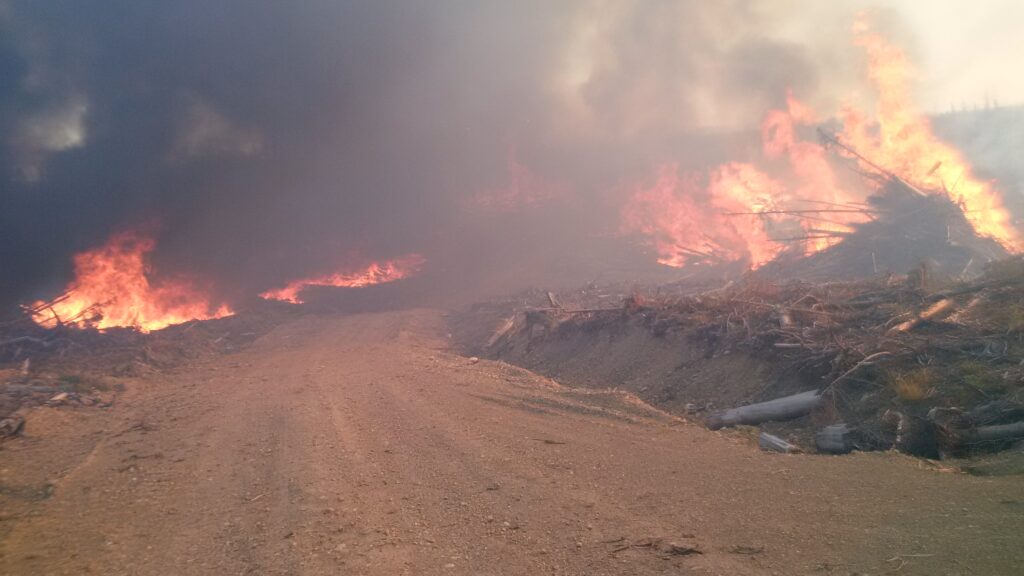
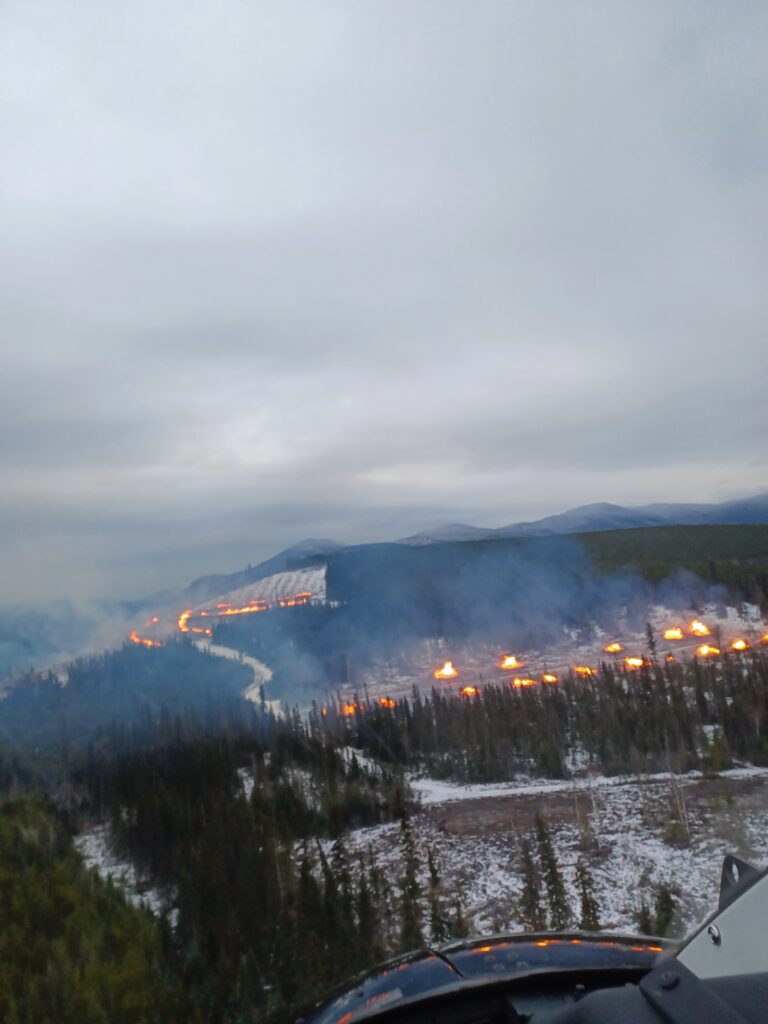
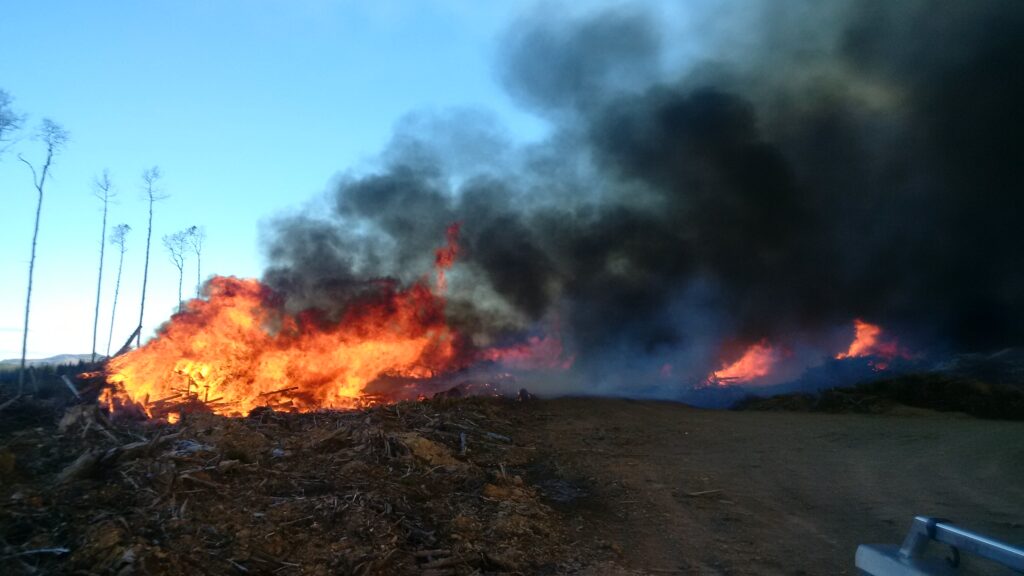
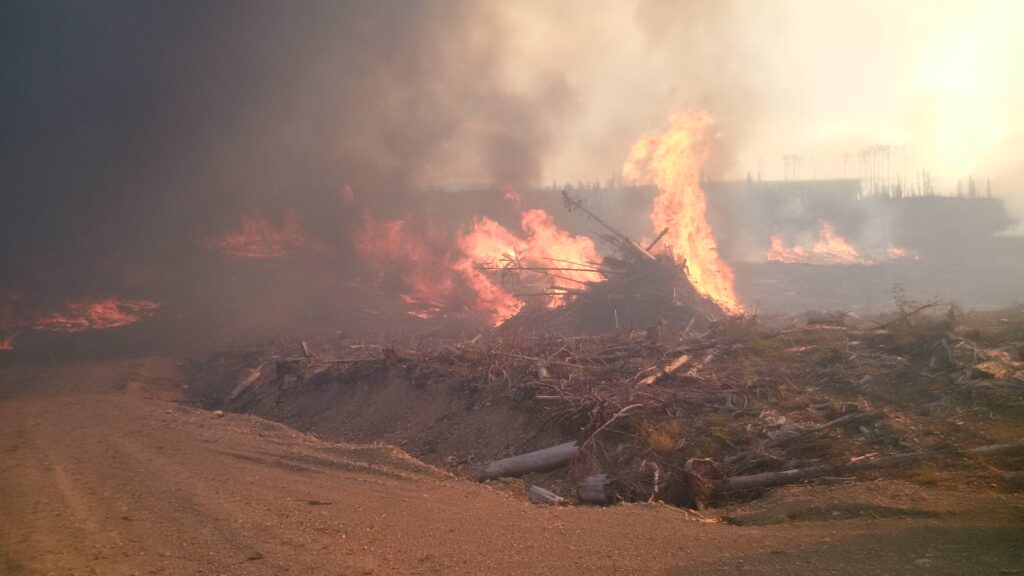
You’ve got a Burning Registration Number, there is a fuel break around your piles and your fingers are itching to strike that match (really, we all use lighters or little butane torches, but it doesn’t have the same ring). Now onto the most complex step, Venting.
Venting, why so important? We’ve all tasted ash in our mouths from extreme smoke days from Wildfires and we aren’t allowed to introduce this much smoke into an airshed for hazard abatement. Let’s break this into steps:
- Where are your piles located and what is the Smoke Sensitivity Zone is that in?
I’ve got some tools for you to use to figure out what zone you are in. I hope Google Earth is your jam. We’ll start with the website: https://www2.gov.bc.ca/gov/content/environment/air-land-water/air/air-pollution/smoke-burning/regulations/openburningregulation/smoke-sensitivity-zone-maps
You can open Google Earth and drop the Smoke Sensitivity Zones in from the website above. Find your woodlot and check to determine your Smoke Sensitivity Zone. If you don’t have woodlot boundaries, here they are: https://woodlotsbc.ca/woodlots/woodlot-licences-on-google-earth/
- Now that you know what Smoke Sensitivity Zone you are in, what does that mean? Here are the fact sheets that give you information on how you can burn within your zone. In the pdfs section 4 gives you the type of venting required for the day of ignition and the following day. It also specifies how many days you can burn for in some zones.
High Smoke Sensitivity Zone: https://www2.gov.bc.ca/assets/gov/environment/air-land-water/air/factsheets/high_sensitivity_burn_zone.pdf
Medium Smoke Sensitivity Zone: https://www2.gov.bc.ca/assets/gov/environment/air-land-water/air/factsheets/med_sensitivity_burn_zone.pdf
Low Smoke Sensitivity Zone: https://www2.gov.bc.ca/assets/gov/environment/air-land-water/air/factsheets/low_sensitivity_burn_zone.pdf
- Now that you know what kind of venting you need for your zone, check that venting. There is a website for that! Of course there is.
https://envistaweb.env.gov.bc.ca/aqo/files/bulletin/venting.html
Check your venting and keep a copy. You can print them to pdf and keep them in your digital records. Or just print them if you like filing paper.
You’ve got a Burning Reference Number, fireguards and adequate burning, so burn baby burn. But you are not done yet. Now we need to get our paperwork together.
Until the paperwork is done, you aren’t done. There are three pieces of information you are required to have on file if you are ever audited by the Forest Practices Board. Unfortunately, Woodlots have a not-so-great record when it comes to Board Audits. We have a 7% fail rate, which is higher than any other licensee. Why? We for the most part, do what we need to do, but we don’t write it down. Also, be warned, there will be more audits for obvious reasons.
If you’ve harvested, you need to fill out the Wildfire Hazard Abatement Form until the hazard is abated. You can make your own, or you can borrow one online. Here is an example.
Fill it out at every change in season until the hazard is abated.
Once you burn, you need to make sure you’ve got the Venting Indexes on file, the Burning Reference Number and a Fire Hazard Assessment Form until the hazard is low.
You are responsible for the piles to be extinguished, so a field check is required, especially in the spring or maybe even into the summer. Take photos of the extinguished piles and keep on file.
To summarize, because it was a lot of information, here are the key takeaways. As always, know your local regulations. This is an overview, and may not apply to your area. Check your local municipality or regional district to see if there are other burning requirements. Do the following to avoid fines and shine at your next Board Audit:
- Wildfire Hazard Assessments
- Burning Reference Numbers
- Fuel Breaks around piles
- Venting
- Follow up Paperwork
- Make sure the piles are out!
Now go have fun and take some pictures for us!


